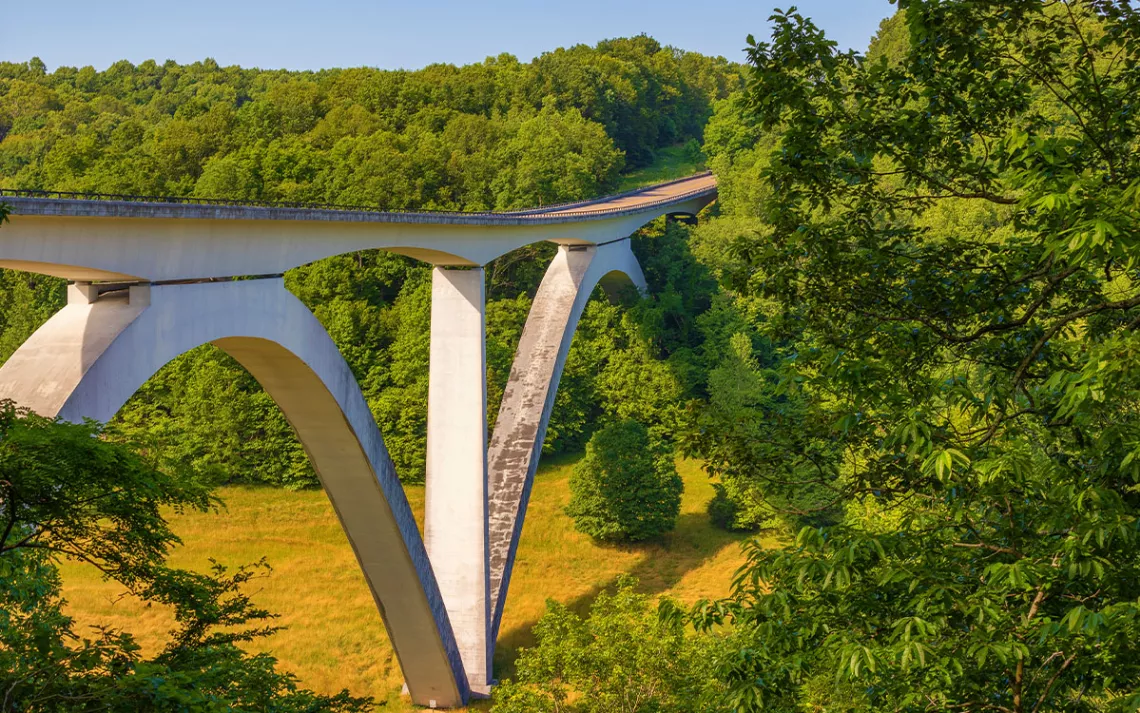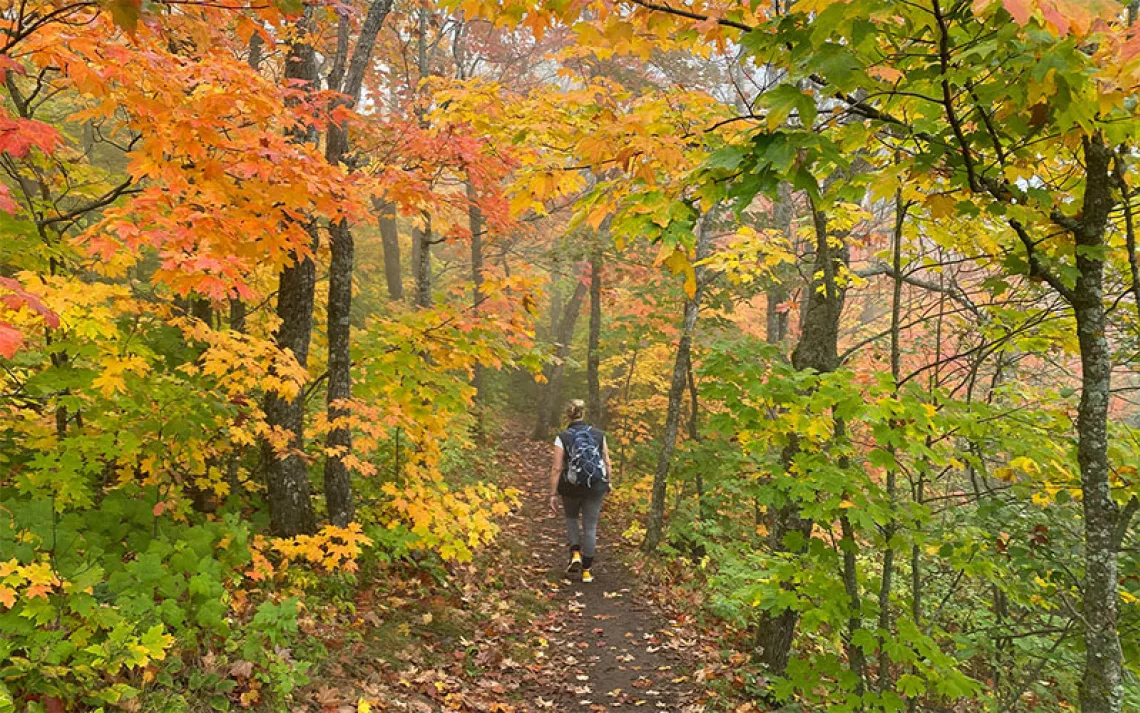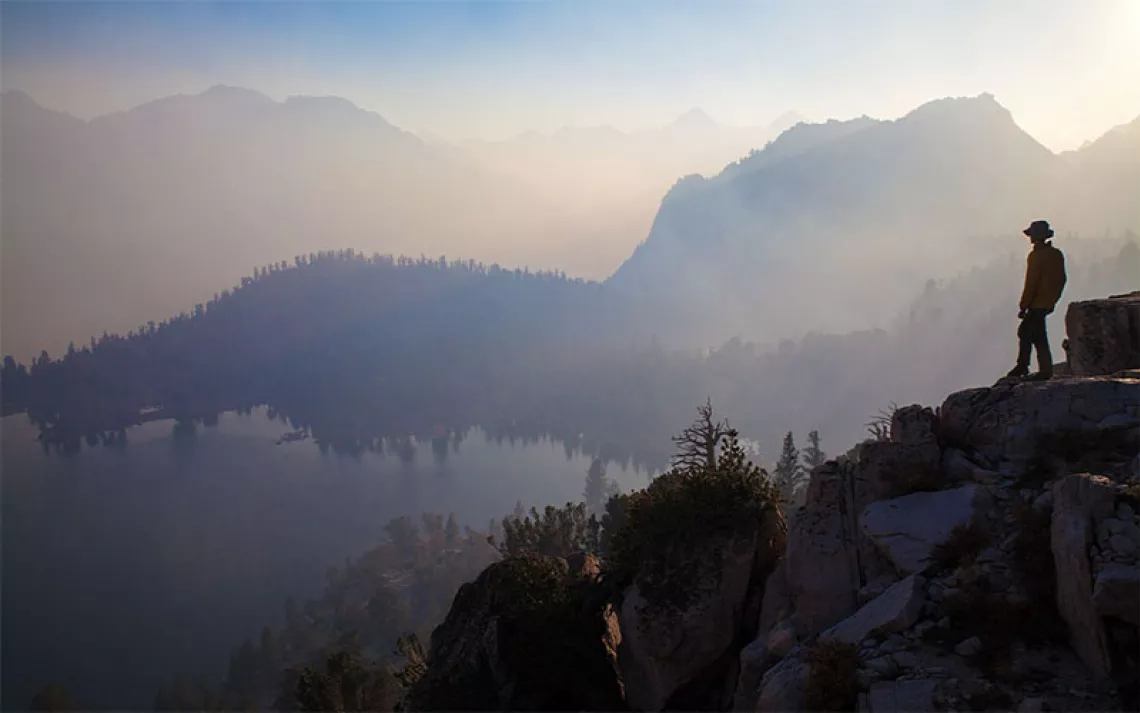The National Park Service Is Getting Serious About Mental Health Care
Visitor fatalities, remoteness, and frequent transfers to new facilities all take a toll on rangers

The National Park Service equipped the Natchez Trace Parkway Bridge in Tennessee with suicide-prevention fencing and solar-powered phones to enable visitors to call a suicide-prevention hotline or 911 for support. | Photo by Dee/iStock
It’s no secret that spending time outdoors is good for mental health, which makes the US national park system an indispensable public wellness resource. But for park employees taking care of this resource, the setting of their job can actually cause mental health hardships. Anxiety and depression, both on the rise in the general population, can be particularly hard to mitigate when a National Park Service job often includes acting as a first responder to visitor fatalities and other daily traumas. The remote locations of many national parks make access to robust mental health care difficult, and, because the job often involves transfers, some rangers have trouble building personal support networks and connecting with local communities.
People experiencing homelessness, addiction, and mental illness often take up residence on land the NPS manages, says Matt Stoffolano, regional chief ranger for the District of Columbia, and rangers often encounter fatalities, including deaths by suicide, with Grand Canyon National Park having one of the highest rates of suicide fatalities in the national park system. The first responders in such situations are usually law enforcement rangers, whose job is different from the rangers responsible for interpretation, education, and visitor experience. They are the public safety part of the NPS, armed and trained specifically to protect both the visitors and the resource itself.
Mental health has become one of the top strategic priorities of the NPS today, in response to a rise in the number of law enforcement rangers themselves dying by suicide, says Rick Gupman, deputy superintendent of Big Bend National Park in Texas. This parallels patterns in law enforcement agencies across the board and is not unique to the NPS, but the size of the agency versus the allocation of resources dedicated to mental health and wellness do set it apart—it’s more disproportionate in the NPS than in any other government agency, according to Stoffolano. While other law enforcement agencies have had dedicated staff to deal with the mental health of employees for years, the NPS has just recently begun to create jobs that address wellness and resiliency.
One of the hurdles park rangers face in accessing mental health care is exactly what draws visitors to national parks in the first place: their remoteness. This means a lack of access to therapy. Stoffolano’s prior job was chief ranger in Coronado National Memorial, where law enforcement rangers working along the US-Mexico border in Arizona are sometimes involved in shootings in the line of duty. “Most public safety emergency service employees want to see a therapist with a background in incidents involving trauma, crime scenes, use of force—incidents outside of your typical experience,” Stoffolano said, but in his search for such therapists for his rangers, he found they were all too busy to take on new patients. In the case of parks that are much more isolated, there are no mental health practitioners for hundreds of miles at all.
A ranger acting as a first responder is helping not only people in extreme situations but also their families afterward, especially in remote areas where other social services are unavailable. “We do a lot of family liaison work, and any time you’re connected to the family after a tragic event, that can take a pretty emotional toll,” said Michael Nash, acting deputy chief for operations and policy for the law enforcement program for the NPS. Some of the most challenging liaising work with families is in the wake of tragedies that involve children.
In communities where access to services is scarce, historically people relied on each other. For generations, rangers did the same. Raymond Skiles, a retired ranger who worked at Big Bend National Park for 30 years, said he and his colleagues used to get their support from the surrounding residents, often marrying in town, sending their children to schools there, and retiring in the area—as he has—because they couldn’t imagine living anywhere else.
Today, transfer is the fast track to promotion, and making a career in the service means moving around. The job's ever-higher turnover rate now means rangers have fewer opportunities to build long-term connections—among rangers, and also with locals—and lack that social support and sense of belonging.
One way to improve rangers' mental health involves changing the facilities the National Park Service manages to better support visitors’ mental health to begin with. Some such work is already completed, such as at the Natchez Trace Parkway Bridge in Tennessee. The NPS equipped it with suicide-prevention fencing and solar-powered phones to enable visitors to call a suicide-prevention hotline or 911 for support, even in the face of federal regulations preventing changes to the look and feel of the bridge.
Other solutions are directed at NPS employees. Nash has introduced a new program called Peer Support, a model for managing the wellness and resiliency of park employees preventatively, helping to build connections among rangers. He described it as an agency-wide shift from the crisis-management model in force since he joined the service in the 1990s to one of ongoing, proactive peer support. A law enforcement ranger is expected to experience somewhere between 100 and 150 potentially traumatic events in the course of their career, and “the cumulative effects of stress injuries over time can be just as bad as one major traumatic event,” said Nash.
To mitigate the cumulative effects of stress, licensed clinicians travel to parks, where they train staff to support one another, focusing on active listening, regular check-ins, and how to share knowledge about available mental health resources. Since October 2022, there have been 874 documented peer support contacts, and Nash believes that’s just “a snapshot of the surface” with most of these contacts going undocumented.
By normalizing talking about mental health, Peer Support helps alleviate the stigma around it. This has been a problem for the NPS because of the frequency of background clearance checks: every five years, agency-wide. By comparison, police officers don’t undergo clearance checks at this frequency or level of detail, Stoffolano said. Employees fear that their job (and their firearm) will be taken away if they admit to struggling with depression, anxiety, or other mental health issues.
“To say 'Hey, I’m hurting' is a really hard thing to do. When you think 'Oh, this could impact my job,' it becomes even more challenging,” Nash said. But the reality is that the job only gets done if the person doing it is well. Nash emphasized that park staff work as a unified team to do everything from custodial and sanitation work to firefighting, search and rescue, interpretation and education, trail maintenance, and management. Mental health is essential to being a high-functioning employee in every role. “When they are taking care of themselves, maybe with the help of a therapist or medication, that’s what makes someone stable and ready to do their job,” said Nash.
 The Magazine of The Sierra Club
The Magazine of The Sierra Club



